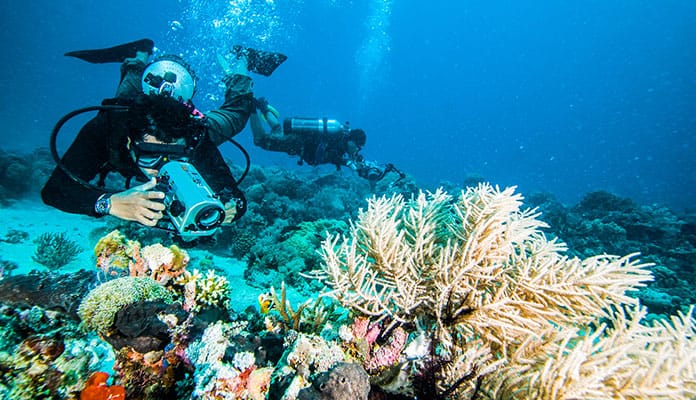
Every scuba diver we have ever talked to can’t stop talking about all the amazing things they have seen during their dive. Almost universally they agree that they wish they were able to capture all the beauty of their dive. Thanks to GoPros and many other underwater cameras, even amateurs are coming out with excellent photos.
Be sure to save your underwater photography for when you have a bit more experience diving. Learning how to dive while trying to take photos of everything you see will be a challenge, even if you have previous photography experience. Once you have the experience to be comfortable underwater, we know that taking photos can enhance your experience.
You may mistakenly think that a creative eye and a solid waterproof camera lens is all you need to take stunning photos underwater. Due to the depth, the salt in the water, the added light, and the speed at which the underwater world moves it is not quite that easy. However, for the best quality pictures, it is important to have the best mirrorless camera and we are here to let you in on some tips that will help you capture all the beauty you see.
Ready to get started? Let’s go!
A Guide to Taking Underwater Pictures
1. Underwater vs. On Land
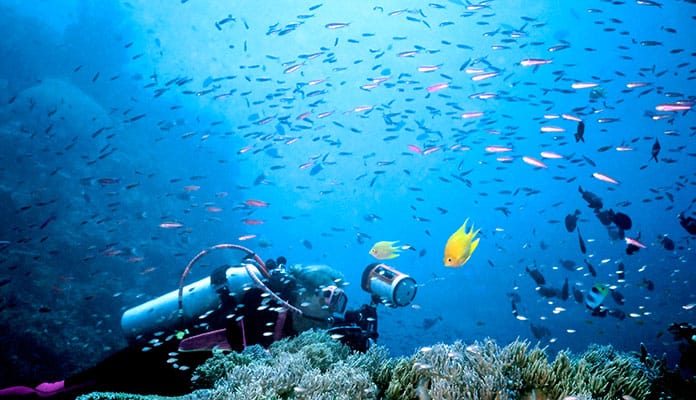
If you have experience taking photographs on land it is completely different than underwater photography. The deeper you go the more color distortion you have to deal with. Water also refracts differently which can lead to your subject looking weird when you process your photos.
Water Depth
Light is absorbed by water, just like air. But it happens more as you dive deeper. If you are a scuba diver you know that the more depth you dive at the more pressure builds up around you. This is also true about the light. Some colors disappear completely.
You will notice the reds in your photo will be the first to go which will give your photos a blue or green hue. You can combat this by using a flash or by playing with your white balance. Keep an eye on the color of your photo – you may have to adjust your white balance every 6-11 feet.
Distance from Your Subject
This can be a tricky aspect of underwater photography. On one hand, you want to get as close to your subject as possible while it may not be possible to. For example, if you’re trying to snap a photo of a shark, you may only be able to get so close before they get spooked. You can always bring a zoomed lens but it can be hard to adjust through your waterproof case.
Lighting Conditions
You are not going to be able to control this aspect of the shoot. The weather above the surface of the water will play a large role in how your photos will turn out. A bright and sunny day will be ideal as the rays of the sun will shoot through the water.
Pro Tip: Instead of shooting down onto your subject try to orientate yourself so you are shooting up towards the surface. This will give you a better frame of your subject and allow you to maximize your lighting conditions.
You can also bring an underwater strobe or light but these have drawbacks. It may irritate or scare away your subject completely. This also may make your pictures look blown out or even fake. Having natural light is your best bet for shooting underwater, but may also be the hardest part to get right.
2. Perfect Your Diving Skills
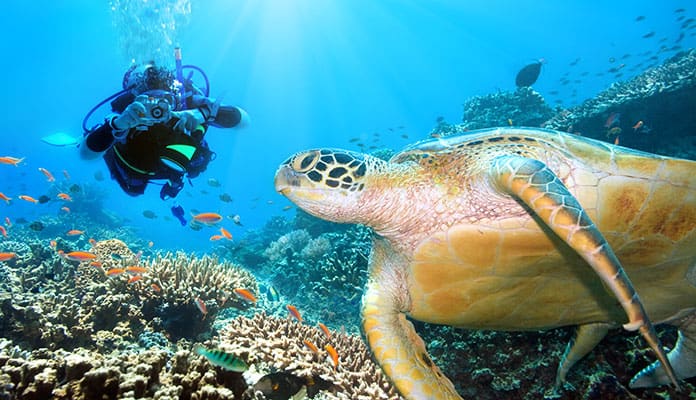
Your skill as a diver plays a huge role in how well your underwater photography will turn out. There are so many more aspects you have to account for when shooting in the ocean. If you have to consciously think about aspects of your dive like maneuvering and positioning yourself on top of taking a photo your dive and the final product will suffer.
One of the biggest things you should have under control its buoyancy. Being able to effortlessly move through the water will not only allow you to get into an ideal position but also not bump into your subject or the coral around you. You should not need to use the coral or the ground to alter your position or move you through the water.
Some courses can teach you how to perfect your buoyancy. If this is something you have trouble with on your dives we would strongly recommend you take advantage of these courses.
3. Diving Equipment
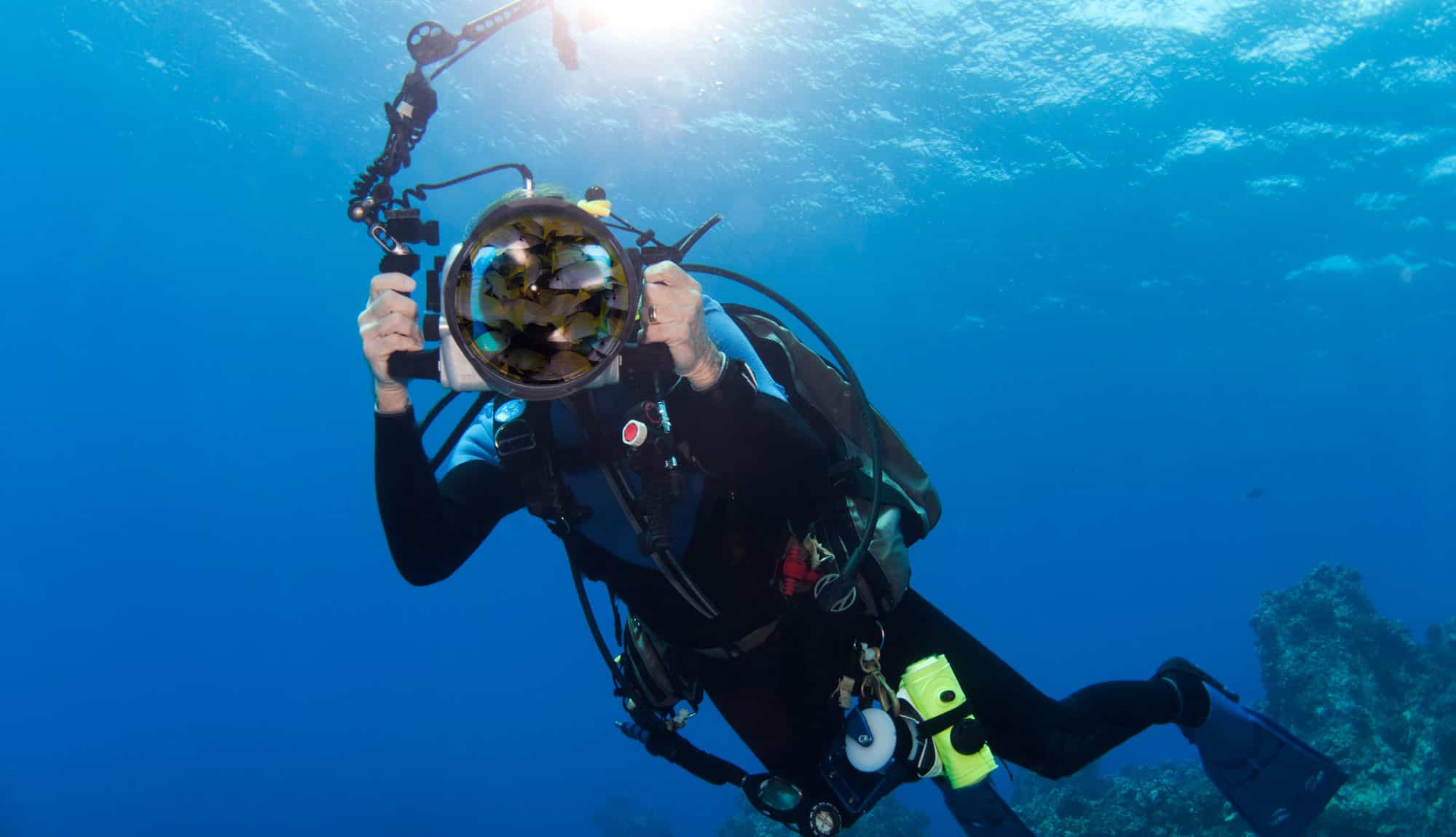
There are so many versions and variety when it comes to underwater photography. Do some research and find the best underwater lens you can find. Knowing how a different focal length will play into your shots will also help you when you’re under the water. With that being said, you don’t have to go out and spend thousands of dollars on camera gear. It can be overwhelming when it comes to the right equipment, so let’s break it down for you.
Cameras
The two main types of cameras are point and shoots and DSLRs. Point and shoots are small and easy to use. They are often less expensive when compared to DSLRs but can yield some pretty outstanding shots. If you don’t already have a camera you should look into this type for your first one. Another great option is a mirrorless camera.
DSLR cameras are bigger, more expensive, and can be harder to use. They have more features than a point and shoot camera and have interchangeable lenses. If you already have a DSLR it will serve you well underwater, just like on a regular shoot.
Housing
No matter what kind of camera you have you will require a waterproof case for it. These will be an after-market purchase as they don’t come with your camera. Waterproof housings will have a rating for the depth at which they can be brought to.
If you are serious about underwater photography you will want one that has the highest depth rating possible. But if you just have your open water certification, and you don’t plan on advancing any further, you can get a case that has a depth rating of around 20 meters (65 feet) as you can only dive to depths of 18 meters (59 feet).
It is also important to look at what you have control of when under the water. Being able to adjust the mode, for example, may be worthwhile when in the water. Moving things like the menu button and adjusting the zoom on your camera may also be needed.
Strobes
If you have a camera and you’re not getting the quality of photos you want, a strobe may help. The lighting underwater can sometimes be sketchy, especially if you are diving at night or in a shipwreck. Being able to bring a strobe will help get your lighting to a place where you can produce quality photos.
4. Plan Your Shot
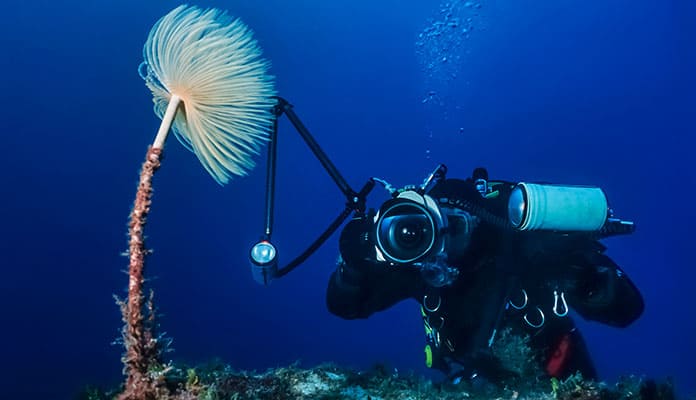
Being able to envision your shoot before you enter the water is a great way to ensure you get the photos you want. Use your dive meeting before entering the water to understand what you should expect to see at your location. This will give you the knowledge you need to be in the right spot at the right time.
Knowing what the weather will be like during your dive will allow you to not only bring the right gear but also position yourself in the right spot. Understanding the terrain and what marine life you can expect will also add to the quality of your planning and the final product.
You might also like: Top Underwater Strobes
5. Patience Is Key
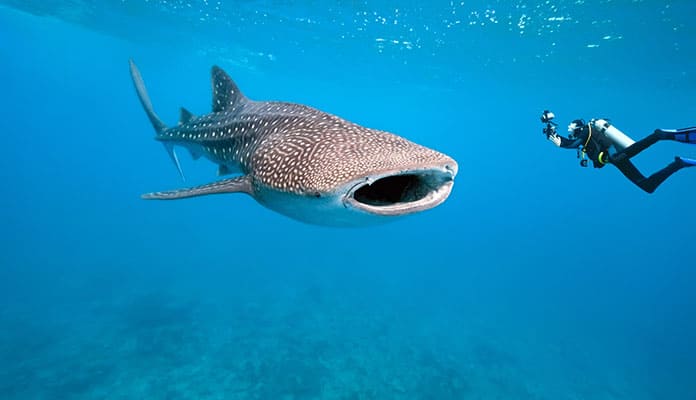
If you have any experience with scuba diving you know that you have zero control over what you see under the surface. This means that not every dive will produce magazine-quality shots. Use this knowledge to your benefit. Don’t get caught up with seeing everything through the lens of your camera. Instead, let the dive unfold.
Once you see your subject, let it come towards you. Use your knowledge from previous dives to predict where the marine life will be. The more times you bring your underwater camera with you on your dives the more experience and confidence you’ll have. If your photos don’t turn out the way you want, think about what you can do differently on your next dive.
Getting upset or frustrated isn’t going to make your photos better. Underwater photography isn’t supposed to be stressful or get you worked up. It’s supposed to be fun. If you aren’t enjoying yourself focus less on the photography part of your dive and just start having fun.
Globo Surf Overview
Scuba diving is an underwater activity that can become addicting. Underwater photography is a natural step in your driving career. Being able to accurately record your experiences underwater is an amazing feeling. Showing people who wouldn’t normally be able to experience the underwater world is a great accomplishment. Taking photographs underwater is a rewarding experience that we know you’ll love.

